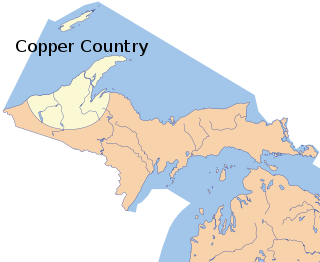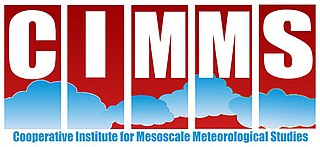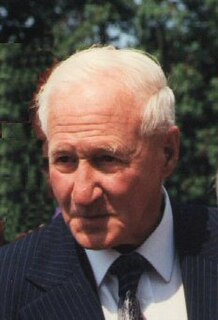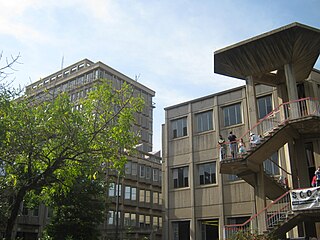
The Copper Country is an area in the Upper Peninsula of Michigan in the United States, including Keweenaw County, Michigan, Houghton, Baraga and Ontonagon counties as well as part of Marquette County. The area is so named as copper mining was prevalent there from 1845 until the late 1960s, with one mine continuing through 1995. In its heyday in the latter half of the 19th century and the early 20th century, the area was the world's greatest producer of copper.

AGH University of Science and Technology is a technical university in Poland, located in Kraków. The university was established in 1919, and was formerly known as the University of Mining and Metallurgy. It has 15 faculties and one school, which will become a faculty in the near future.
Defence Research and Development Canada, is an agency of the Department of National Defence (DND), whose purpose is to provide the Canadian Armed Forces (CAF), other government departments, and public safety and national security communities with knowledge and technology.
Meili Faille is a Canadian politician. She was a Bloc Québécois member of the House of Commons of Canada, being first elected in the 2004 election in the district of Vaudreuil-Soulanges. Prior to being elected, Faille was a consultant and project coordinator. From 2004 to 2008 she was the Bloc shadow critic of Citizenship and Immigration.

The Cooperative Institute for Mesoscale Meteorological Studies is a research organization created in 1978 by a cooperative agreement between the University of Oklahoma (OU) and the National Oceanic and Atmospheric Administration (NOAA). CIMMS promotes collaborative research between NOAA and OU scientists on problems of mutual interest to improve basic understanding of mesoscale meteorological phenomena, weather radar, and regional climate to help produce better forecasts and warnings that save lives and property. CIMMS research contributes to the NOAA mission through improvement of the observation, analysis, understanding, and prediction of weather elements and systems and climate anomalies ranging in size from cloud nuclei to multi-state areas.

Richard Geren, OC (1917–2002), was an American geologist who was a key member of a team that defined high-grade iron ore deposits in the Knob Lake area of northeastern Quebec. The deposit's magnitude and significance led to the formation in 1949 of the Iron Ore Company of Canada (IOCC). Geren led pre-production studies and became Manager of IOCC's operations at Schefferville, where he faced numerous challenges associated with building a large mining operation in isolated sub-Arctic conditions.
Capability Immaturity Model (CIMM) in software engineering is a parody acronym, a semi-serious effort to provide a contrast to the Capability Maturity Model (CMM). The Capability Maturity Model is a five point scale of capability in an organization, ranging from random processes at level 1 to fully defined, managed and optimized processes at level 5. The ability of an organization to carry out its mission on time and within budget is claimed to improve as the CMM level increases.
John J. Jonas was born in Montreal and graduated from McGill University with a bachelor's degree in Metallurgical Engineering in 1954. He later attended Cambridge University on an Athlone Fellowship and received a Ph.D. degree in Mechanical Sciences in 1960. On returning to Montreal, he began teaching "mechanical metallurgy" at McGill and built up a research laboratory that includes a number of specialized testing machines and is particularly well equipped for experimental investigations in the field of high temperature deformation.
Allan L. Higdon is a former Ottawa City Councillor and acting mayor of Ottawa. He served on council from 1994 through 2000.
People Capability Maturity Model is a maturity framework that focuses on continuously improving the management and development of the human assets of an organization. It describes an evolutionary improvement path from ad hoc, inconsistently performed practices, to a mature, disciplined, and continuously improving development of the knowledge, skills, and motivation of the workforce that enhances strategic business performance.

James Walter Douglas was a Canadian born mining engineer and businessman who introduced a number of metallurgical innovations in copper mining and amassed a fortune through the copper mining industry of Arizona and Sonora.
Neil Campbell FRSC was a famous Canadian geologist, and is a notable within the Canadian Mining Hall of Fame.
Anthony James "Tony" Naldrett, FRSC was a Canadian geologist. He was an authority on the geology and origin of nickel-copper-platinum group element deposits, the tectonic setting in which they occur, the petrology of associated rocks, and controls on their composition. He was an expert on the reaction between sulfide and silicate melts, fractional crystallization of sulfide melts, and the role of hydrothermal fluids.

The Canadian Institute of Mining, Metallurgy and Petroleum (CIM) is a not-for-profit technical society of professionals in the Canadian minerals, metals, materials and energy industries. CIM's members are convened from industry, academia and government.
Geometallurgy relates to the practice of combining geology or geostatistics with metallurgy, or, more specifically, extractive metallurgy, to create a spatially or geologically based predictive model for mineral processing plants. It is used in the hard rock mining industry for risk management and mitigation during mineral processing plant design. It is also used, to a lesser extent, for production planning in more variable ore deposits.
The House of Commons Standing Committee on Citizenship and Immigration (CIMM) is a standing committee of the House of Commons of Canada.

The School of Chemical and Metallurgical Engineering is one of seven schools in the University of the Witwatersrand's Faculty of Engineering and the Built Environment. The School offers 4-year undergraduate degrees and post-graduate degrees in chemical and metallurgical engineering.
Frank Thomas Matthews White (1909–1971) was an Australian mining and metallurgical engineer and mineral science educator. His career included appointments in Australia, Fiji, Malaya, and Canada.
Alban Jude Lynch AO is a mining engineer and academic who helped develop the mineral processing teaching experience for mining students in Australia.






